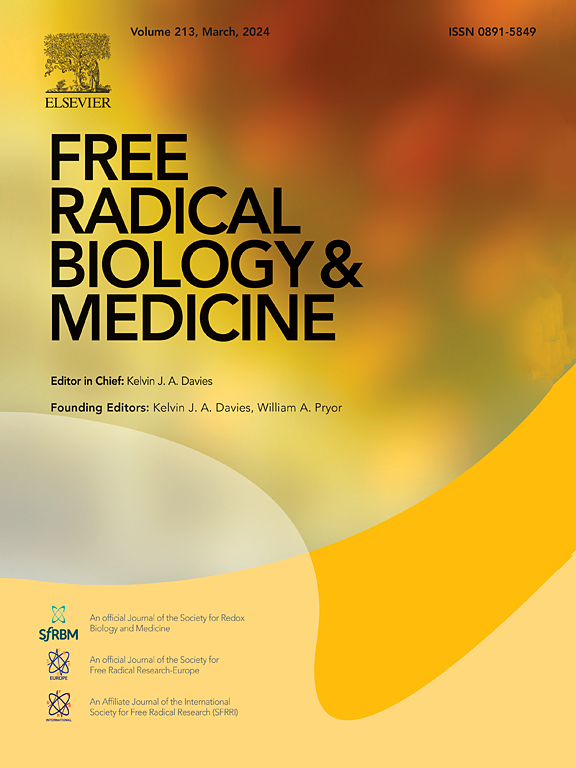SR-B1 deficiency suppresses progression in acute myeloid leukemia via ferroptosis and reverses resistance to venetoclax
IF 7.1
2区 生物学
Q1 BIOCHEMISTRY & MOLECULAR BIOLOGY
引用次数: 0
Abstract
Increase of immature myeloid cells in the bone marrow drives the development of acute myeloid leukemia (AML). The study aimed to clarify the biological function and regulatory mechanism of scavenger receptor class B type 1 (SR-B1) in AML, mainly its effect on ferroptosis and the influences on leukemogenesis and resistance to venetoclax. In this study, we found that the SR-B1 deficiency directly reduced the invasion and promoted death of malignant cells in AML. Strikingly, SR-B1 deficiency could up-regulated the expression of ferroptosis-related proteins to facilitate the occurrence of ferroptosis in vivo, and could also down-regulated the expression of apoptosis related protein B-cell lymphoma-2 (BCL-2). And then, we confirmed SR-B1 inhibitor block lipid transport-1 (BLT-1) had a superior efficacy in AML cells and AML model mice. The study found that whether SR-B1 deficiency or BLT-1 treatment could cause iron deposition and the accumulation of lipid peroxides in vivo, thereby suppressing leukemogenesis through ferroptosis. Critically, we found that SR-B1 inhibitor BLT-1 could reverse drug-resistance of venetoclax to promote AML cells death via ferroptosis. Our finding identified that SR-B1 as a critical regulator of the proliferation in AML which could provide a promising therapeutic strategy against malignant myeloid leukemia cells and drug-resistance.

SR-B1缺乏通过铁上吊抑制急性髓性白血病的进展,并逆转对venetoclax的耐药性。
骨髓中未成熟髓细胞的增加驱动急性髓性白血病(AML)的发展。本研究旨在阐明清除率受体B类1型(SR-B1)在AML中的生物学功能和调控机制,主要是其对铁凋亡的影响以及对白血病发生和venetoclax耐药的影响。在本研究中,我们发现SR-B1缺乏可直接降低AML中恶性细胞的侵袭并促进其死亡。值得注意的是,SR-B1缺乏可以上调铁死亡相关蛋白的表达,促进体内铁死亡的发生,也可以下调凋亡相关蛋白b细胞淋巴瘤-2 (BCL-2)的表达。然后,我们证实SR-B1抑制剂阻断脂质转运-1 (BLT-1)对AML细胞和AML模型小鼠具有优越的疗效。研究发现,无论是SR-B1缺乏还是BLT-1治疗,均可引起体内铁沉积和脂质过氧化物的积累,从而通过铁下沉抑制白血病的发生。关键的是,我们发现SR-B1抑制剂BLT-1可以逆转venetoclax的耐药性,通过铁凋亡促进AML细胞死亡。我们的研究发现SR-B1是AML增殖的关键调节因子,可以为恶性髓系白血病细胞和耐药性提供有希望的治疗策略。
本文章由计算机程序翻译,如有差异,请以英文原文为准。
求助全文
约1分钟内获得全文
求助全文
来源期刊

Free Radical Biology and Medicine
医学-内分泌学与代谢
CiteScore
14.00
自引率
4.10%
发文量
850
审稿时长
22 days
期刊介绍:
Free Radical Biology and Medicine is a leading journal in the field of redox biology, which is the study of the role of reactive oxygen species (ROS) and other oxidizing agents in biological systems. The journal serves as a premier forum for publishing innovative and groundbreaking research that explores the redox biology of health and disease, covering a wide range of topics and disciplines. Free Radical Biology and Medicine also commissions Special Issues that highlight recent advances in both basic and clinical research, with a particular emphasis on the mechanisms underlying altered metabolism and redox signaling. These Special Issues aim to provide a focused platform for the latest research in the field, fostering collaboration and knowledge exchange among researchers and clinicians.
 求助内容:
求助内容: 应助结果提醒方式:
应助结果提醒方式:


